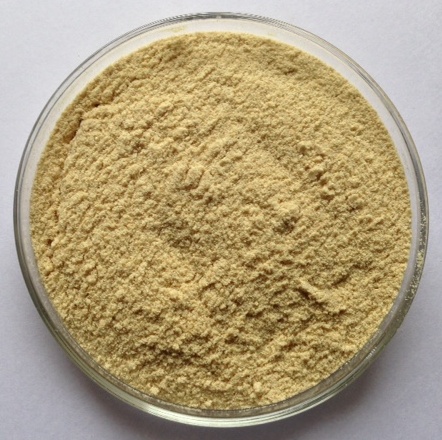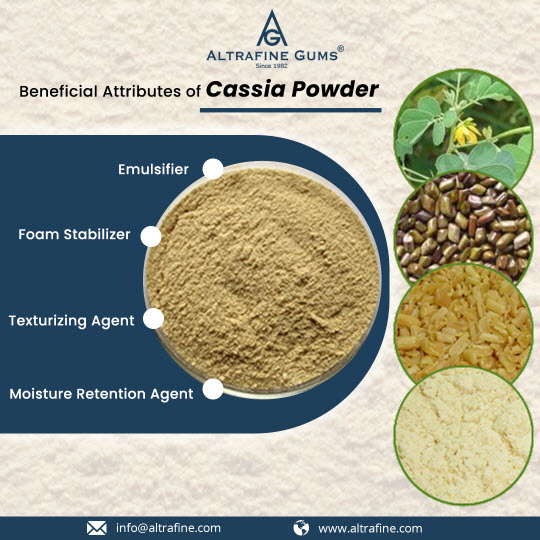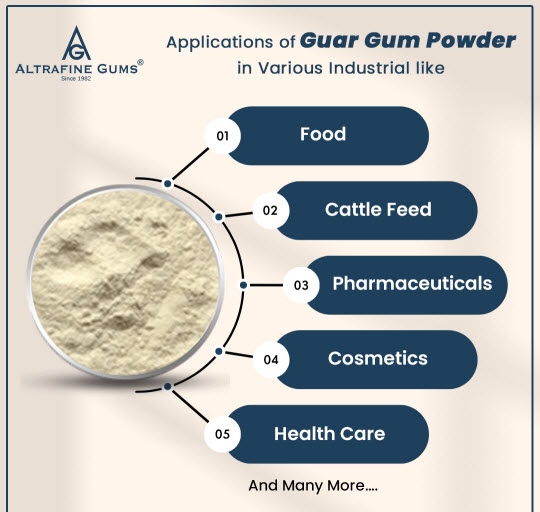Food processing has come a long way in terms of innovation and efficiency, with various additives playing a crucial role in achieving desired textures and consistencies. One such additive is Guar Gum Powder, a natural thickening and stabilizing agent derived from guar beans. In this article, we will explore the versatile applications of Guar Gum Powder in food processing and its growing importance in the food industry.
What Is Guar Gum Powder?
Guar Gum Powder, often referred to as Guar Gum, is a natural substance extracted from guar beans. These beans are primarily grown in India, Pakistan, and the United States. Guar Gum is a white, odorless, and tasteless powder that has remarkable water-absorbing and thickening properties. It is known for its ability to improve the texture, consistency, and shelf life of a wide range of food products.
History of Guar Gum
The use of Guar Gum dates back to ancient times, with its origins in India. Initially, it was utilized as a traditional thickening agent in various Indian dishes. However, over the years, its applications have expanded globally, making it an integral part of the food processing industry.
Guar Gum in Food Industry
Benefits of Guar Gum in Food Processing
Guar Gum has gained popularity in the food industry due to its numerous advantages. It is valued for its ability to:
- Enhance texture and consistency
- Extend shelf life
- Act as a stabilizer and emulsifier
- Improve moisture retention
- Assist in reducing ice crystal formation in frozen foods
- These qualities make Guar Gum an excellent choice for a variety of food products.
Applications in Baking
How Guar Gum Improves Baked Goods
In the realm of baking, Guar Gum plays a pivotal role. It acts as a binding agent, preventing the separation of ingredients and enhancing the texture of baked goods. Guar Gum is particularly useful in gluten-free baking, where it compensates for the lack of gluten, providing a soft and chewy texture to products like bread and cookies.
Enhancing Dairy Products
Dairy products can also benefit from Guar Gum. It is commonly used to thicken and stabilize ice creams, yogurt, and other dairy items. Guar Gum prevents ice crystals from forming in ice cream, ensuring a smoother, creamier texture.
Improving Sauces and Dressings
Guar Gum is a valuable ingredient in the preparation of sauces and dressings. It functions as a stabilizer, preventing separation and maintaining the desired consistency of products like salad dressings, ketchup, and mayonnaise.
Guar Gum in Meat Processing
Improving Meat Texture and Quality
In meat processing, Guar Gum can be used to enhance the quality of meat products. It helps to bind meat particles, improve texture, and reduce water loss during cooking, resulting in juicier and more succulent meat dishes.
Gluten-Free and Vegan Options
With the growing demand for gluten-free and vegan food options, Guar Gum has become a go-to ingredient. It allows manufacturers to create gluten-free and vegan products that closely resemble their traditional counterparts, both in taste and texture.
Challenges and Precautions
Potential Allergenicity
While Guar Gum is generally considered safe for consumption, some individuals may experience allergies or sensitivities to it. It’s essential to be aware of any potential allergic reactions and use Guar Gum judiciously.
Regulations and Safety
The use of Guar Gum in food processing is subject to strict regulations and safety standards. It must adhere to quality control measures to ensure its safety and effectiveness in various food applications.
Sustainability and Sourcing
Guar Gum is derived from a naturally occurring plant, making it a more sustainable option compared to some synthetic additives. Sustainable sourcing and ethical practices are vital to maintaining the ecological balance.
Conclusion
Guar Gum Powder is a versatile and valuable component in the food processing industry. Its unique properties make it an essential ingredient for achieving the desired texture, consistency, and quality in a wide range of food products. As the demand for gluten-free and vegan options continues to grow, Guar Gum’s importance is expected to rise even further.
FAQs – Guar Gum
Is Guar Gum safe for consumption?
Guar Gum is generally safe for consumption, but individuals with allergies or sensitivities should exercise caution.
What are the alternatives to Guar Gum in food processing?
Some alternatives to Guar Gum include xanthan gum, locust bean gum, and cornstarch.
Can Guar Gum be used in gluten-free recipes?
Yes, Guar Gum is commonly used in gluten-free recipes to improve texture and consistency.
How does Guar Gum affect the texture of meat products?
Guar Gum enhances the texture of meat products by binding meat particles and reducing water loss during cooking.
What are the environmental benefits of using Guar Gum in food processing?
Guar Gum is derived from a natural source, making it a more sustainable choice, and sustainable sourcing practices can further enhance its environmental benefits.

























